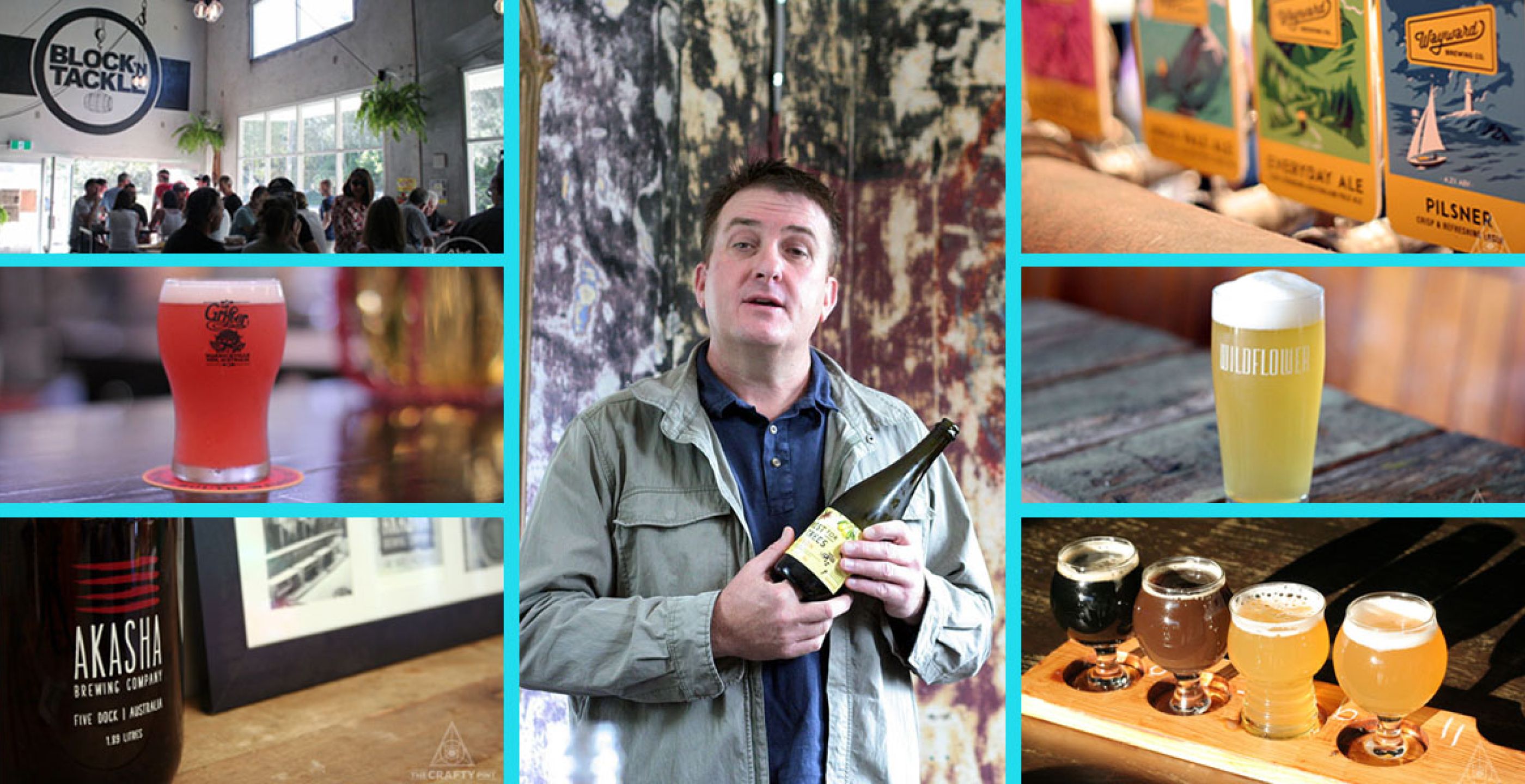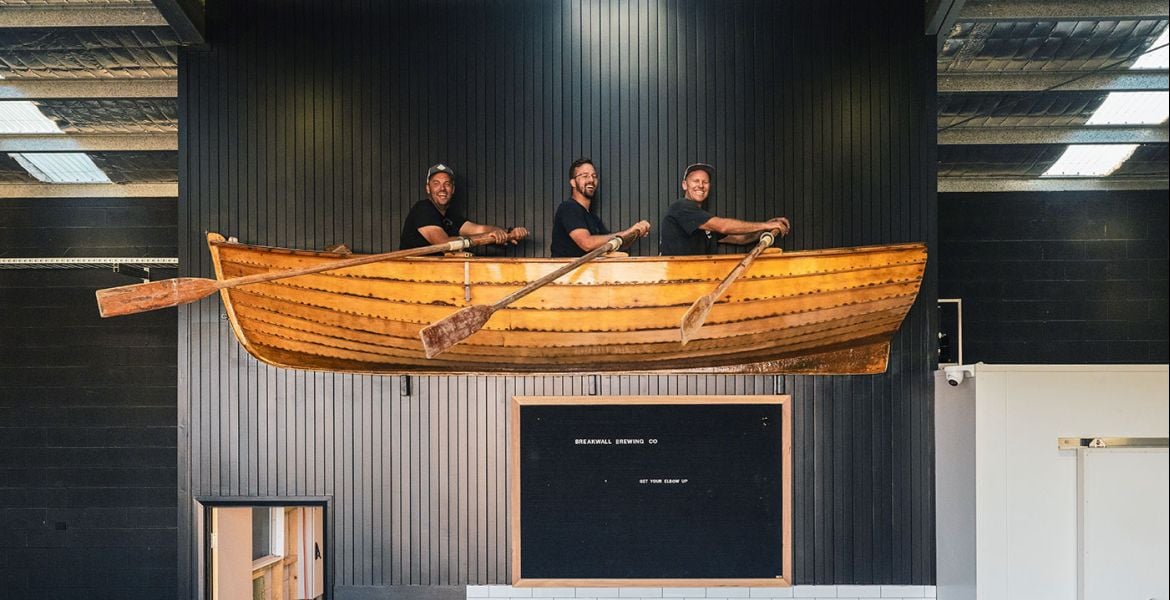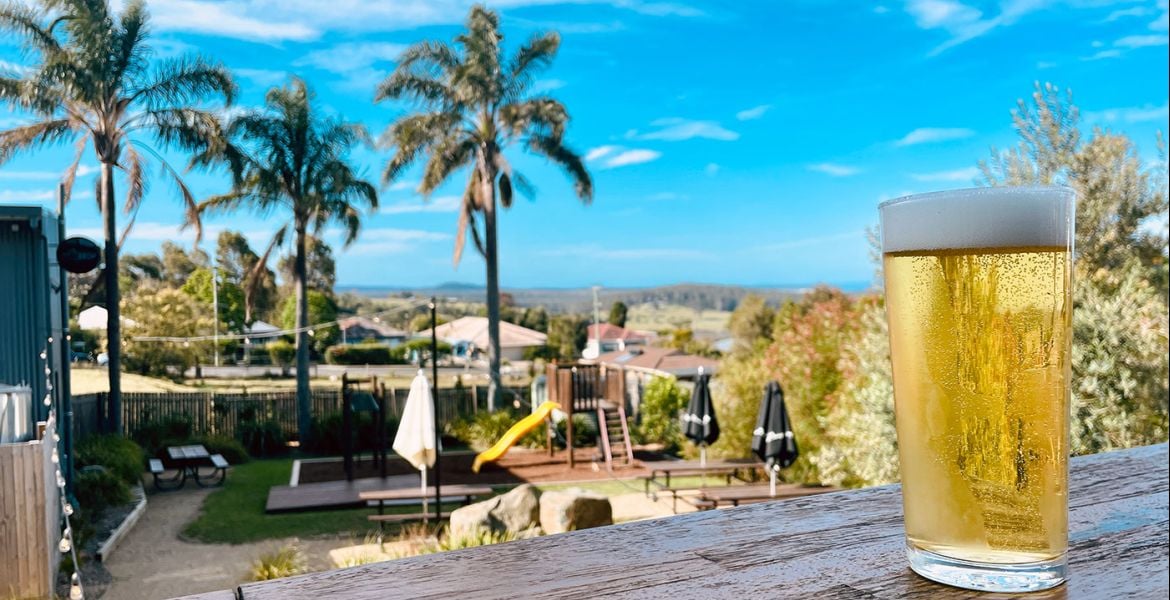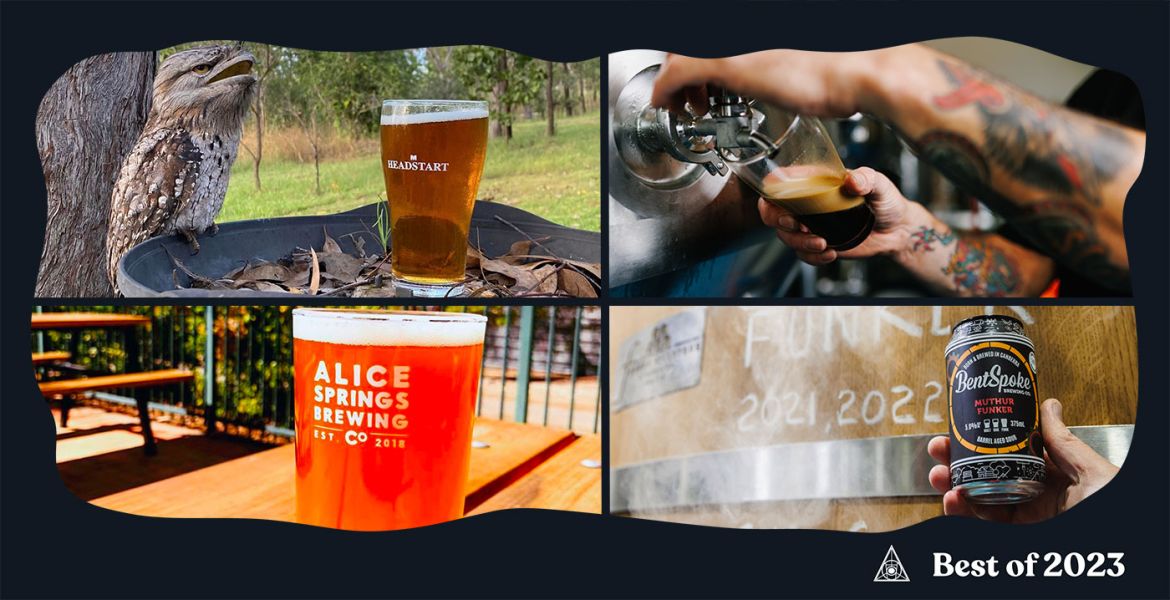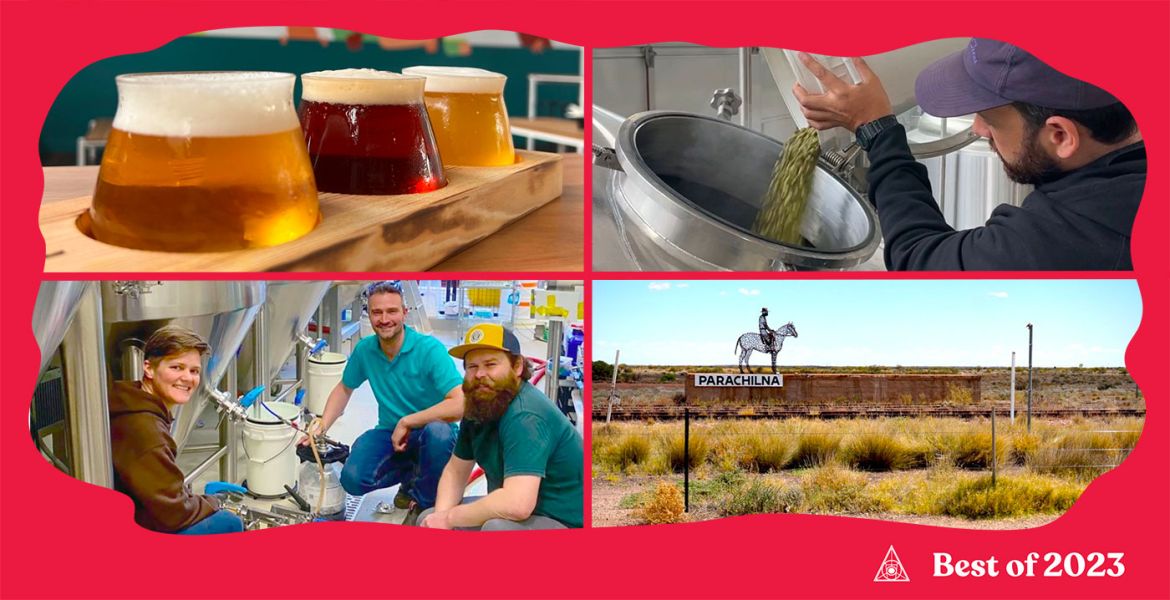Before attempting to justify the makeup of this list, let’s get the excuses out of the way.
There’s no way any one person can try every new beer made in this state. The place is too damn big and there are too many breweries making too many beers for it to be anything close to manageable.
That why we farm out the initial voting to dozens of people helping to keep the beer flowing across the state; publicans and bartenders, retailers, reps and writers – beer nerds who really do try and chase down everything in sight. The idea is that getting these learned folk to send us a list of their favourites makes it (a little bit) fairer and more representative of what’s happening within the borders to the north, south, east and west, rather than just picking favourites from whatever’s happened to pass by our own lips. It also kind of absolves us of ultimate responsibility for the outcome, so the hate mail and comments from aggrieved punters hurts (a little bit) less.
But, look, things seem to be pretty great out there. Tough in some quarters with the whole increased competition thing, but overall the picture is as rosy as a raspberry sour ale. New breweries are opening. Existing breweries are expanding. Tax breaks are coming as politicians are coming around to the idea that supporting breweries is great for picking up cheap votes in the upcoming election stimulating the local economy via jobs and growth. In some brewery cellar doors you can now even drink a full-sized beer instead of a pissy little taster. Cheers to progress!
A hell of a lot of good beers didn’t make this list. Actually, hardly any do make it. That’s the way it goes. If you’re a larger brewery with good distribution you have a better chance. If you’re a regional brewer with limited distribution, not so much. If you’re a brewpub, even less. And if you’re a regional brewpub you’re basically disqualified before the competition starts. We’re sorry. The system is flawed, but it’s the best one we can think of right now.
So, without further ado, here are the reckons…
Akasha - The Eagle

Here’s the thing, and let’s be really honest about it: The Eagle probably wasn’t the best new beer Akaska put out in 2018. Sure, it got the most votes, but democracy has been under a fair amount of strain in recent times and we’ve seen that the better candidate doesn’t always win. Sometimes it's the loudest option, the most memorable, that wins the day. And what chance of someone forgetting even a sip of a hulking 12 percent ABV quadruple IPA?
It was brewed for the 2018 GABS festival and fair bludgeoned its way into the top five of the People’s Choice vote. After that, at the brewery people were buying growlers of it. Growlers! That’s two full litres of very, very strong beer you’re contractually obliged to finish once it’s been opened because, once you do, it ain’t getting any better. It’s like popping a cask of wine and having to neck the whole thing in a session. Madness.
Or perhaps it’s testament to a brewing team that can make a damn fine hop forward beer at any point on the spectrum. Case in point: this year they also brought out the 3.5 percent ABV Little Smith session IPA and it was lovely. Mercifully, they made their Mosaic IPA a more permanent feature, because it’s bloody excellent. The Eagle was a show stopping one-off. The others are beers you want to drink all the time. The underlying point is that, if you’re into hoppy beers, this is a brewery that rarely lets you down.
Block ’n Tackle – Ferryman’s Peat Smoked Rye Ale

If there are any people in the Aussie beer world who could have a claim to knowing how Sisyphus felt, it’s the guys that run Block ’n Tackle. They've been pushing shit uphill for years at their Central Coast brewery, having been dumbfounded and debilitated by legislation and restrictions faced – as far as we can gather – by no other brewery in the country. The details are excruciatingly boring, and they don’t like to go on about it, but the general gist is that they’ve been burdened by weights and measures.
They actually got pretty close to giving it all away this year, but a bit of injury-time support from people in positions of power helped convince them it was worth continuing to plug away. And well they should, given they got themselves into this list with arguably the least available beer and quite probably the most unlikely style.
Their autumn release was a collaboration with Gosford’s top bottleshop, Oldfield Cellars, a relationship that goes back to their quite wonderful lime and white pepper dark saison of last year. Ferryman’s Peat Smoked Rye Ale was a surprisingly bright beer built heavily around smoked malt and rye, both relatively challenging characters in their own right but especially so together.
When it first came out, the release notes were accompanied with an almost sheepish warning to their regulars that this would be a very different beer and, perhaps, one best suited to those with adventurous palates in the mood for something different. You could almost feel the grin as the next communication we got from them was to say it had become a best-seller and they only had a keg left.
So perhaps there’s a lesson in there somewhere: when the man gets you down, just keep on pushing.
Forest For The Trees – Saison

It’s a funny old life. One moment you’re driving home, the next you’re upside down in a broken wreck, staring into the light.
Brad Rogers’ legend was sealed well before the crash knocked him over and a stroke threatened worse. For many years, the beers he helped conceive had been lodestars for Australian drinkers, from the celebrated pre-Yak beers of Matilda Bay through to the all conquering Stone & Wood Pacific Ale. His contribution to the industry would have ensured enduring respect even if he chose to withdrew permanently – or was forcibly withdrawn, as it were – from the beer world.
There’s an awful lot to lose from being in a serious accident, but one thing to be gained is perspective. What was taken for granted becomes bigger and more important. The significant suddenly becomes trivial. Slowly, slowly, Brad regained a sense of normalcy and began to refocus on important things not yet achieved. And part of that was making something he’d not made in a long, long time: saison.
“Putting the boots back on” is the way he pitched his return to brewing with the relatively quiet launch of Forest For The Trees, a new farmhouse ale focused brewing company housed within Fermentum, the company under which the likes of Stone & Wood, Fixation and others operate. The project had a personal connection, first to a broader church of Old World beer styles he had long loved and sought, and also to his previous life as a winemaker. The real synergy between the worlds will come through future releases involving barrels, blending and more time. But to begin with it was with a simple saison.
Forest For The Trees’ first release was vibrant and aromatic. It was dry and zesty, full of citrus and spice. It was a clean and easy-going beer, stuffed with subtle complexities. And it had a head like a soft serve ice cream. Not many beers arrive on the scene with such class and instant finesse. Then again, not many beers have Brad Rogers behind them.
Grifter – Pink Galah

Remember those drinks you’d order as a kid from a kitsch all-you-can-eat buffet restaurant? Drinks that didn’t really have flavours, just colours. Radioactive green. Impossible yellow. Carcinogenic red. By God, those things were fun. Grifter brought it all home this year with Pink Galah, a fabulously flamboyant pink lemonade-inspired sour.
In the glass, this thing dressed to impress, all rose breast and white crest. And it tasted like raspberries; fruity but dry and sour. It tickled you, made you giggle, like you were drinking sherbet. You could reasonably argue that it isn’t the finest beer to come from the Grifter brewery – especially in a year where they won a trophy at The Indies for The Omen oatmeal stout (and yes, the cup did go straight to their pool room) – but none flew brighter and naught squawked louder than the Galah.
Modus Operandi – Dream Weaver

Dream Weaver may well have been Dennis de Boer’s magnum opus to hazy beers. The head brewer – who has since departed to try his hand at winemaking – had put a lot into developing Modus Operandi’s cavalcade of New England IPAs and associated hazy variants over the years, but this unfiltered IPA was the one that seemed to best capture the zeitgeist.
To delve into exactly why that may be the case would rapidly descend into an untenable exercise in hair-splitting, hop constitution and yeast counting. So let’s just defer to the voters of the state and be content in their conclusion. If further justification was required for tipping this beer over the line in advance of others, we can only offer up the events of one October evening.
Dennis, a guest speaker at a Crafty Pint blind tasting, pulled out a small surprise in the form of a couple of cans of Dream Weaver. At that point the beer was six months old. Bearing in mind this is a style of beer where the accepted norm is to consume it so fresh that you need to actually drink it before it’s made, it showed astonishing vibrancy and was drinking beautifully.
Cold storage will only do so much to preserve a delicate beer for so long. The beer has to be bloody good to start with. And this was bloody good.
Nomad – Supersonic DIPA (Rainforest Lime)

Let’s go back a few years – about five – for reference. There’s this Aussie couple living the dream in Italy. They’ve got a place in Barolo, they’re travelling around, drinking wine that they’d started exporting back home. Along the way they got mixed up in brewing circles and, bada bing bada boom, began throwing a bit of Italian beer into their shipments. They started bringing the brewers back here too, and these guys liked what they saw. One of them even wanted to get involved. So they all got together and opened Nomad Brewing.
Their schtick was to use lots of native Australian ingredients in their beer; peppers, berries, limes, salt – that sort of thing. Their first beer was this wonderful saison, a complex mix of herb and spice, sweet fruit and malt, wattleseed and coffee. They’d go on to win a trophy for it a couple of years later but, since no one much seemed to drink saisons at the time, they could barely sell it. This year they actually stopped making it. Anyway, the rest of those first Nomad beers were okay. Pale ale. IPA. Nothing to give you confidence that this was a brewery whose hop forward beers were going to corner the market.
In the meantime they’d dumped seawater into a beer and somehow brought gose into the public eye. Through their ever-expanding distribution business, they’d arguably bought more big international names – brewers and beers – to Australia than anyone before and, with their help, had turned out some utterly unique beers. Things were going good. Lots of interesting stuff happening. But it still felt like they couldn’t seem to nail that really big, hoppy beer.
This year they did it. They took inspiration from an old recipe, the Supersonic double IPA, and turned it into a series of releases. The first featured finger limes. The next – the standout – used rainforest lime. Then came desert lime. These were bold beers, loaded with a fruit salad’s worth of hops, brightened with native ingredients, and delivered with beautiful balance that often belied their potent size and strength.
Sauce - Sullivans Cove Barrel-Aged Stout

If they spent their first year getting set up, this year the team at Sauce seemed to spend a lot of time out back in the garden. Mind you, when you’ve got the biggest beer garden of any brewery in Sydney, you probably would too. They got turf put in. They planted hops. They made this cool little mobile bar that gets wheeled out back so you don’t have to make a sad trudge all the way back into the brewery to get another beer. It’s pretty great. Occasionally though, they roused themselves, went inside and made a bunch of beers that ended up in the running for this list.
Leading the line was the Bubble & Squeak hazy IPA which finished top of the pile (and, oddly, also fifth…) in The Crafty Pint’s broad church blind tasting of the style. And that was immediately after its little sibling, the Piss Weak session IPA, had taken out top spot in the mid-strength blind tasting a few weeks beforehand – the first brewery to be a back to back winner in several years of running these things. (Also, a bunch of experienced and respected beer judges gave the brewery gold medals at some competitions, which they’re probably quite proud of too). But picking that kind of low hanging fruit seemed too easy – especially when there was something more delectable and elusive on offer.
The Sullivans Cove Barrel-Aged Stout was their first ever barrel-aged beer and it set the bar high with a heady cocktail of smoke and oak, chocolate and coffee, vanilla and sweetness. It was all here in the form of a jet black 13 percent ABV monster that was rich as a king and smooth as a silk milkshake.
Stone & Wood - Sticky Nectar

When The Crafty Pint interviewed Stone & Wood co-founder Brad Rogers as part of an in depth story on Pacific Ale, this little nugget of a quote popped out:
"What we have seen emerge in recent years is this New England IPA style, which really is to a large extent built on the same framework as Pacific Ale," Brad says. "The hops might be different and the ABV might be higher and the haze might be a little more dense but it’s certainly evocative of the same structure.”
Now, this wasn’t a direct claim that the Byron Bay brewery had come up with NEIPAs before anyone else. Rather, it went on to explain that over the years they’d put a lot of time and energy into perfecting the way in which you would want to produce a high quality, hop forward, hazy beer. Bearing that in mind, it makes a lot of sense that when Stone & Wood decided to step up to the plate and make a “proper” hazy IPA this year, they absolutely belted it out of the park.
Sticky Nectar is, to give it its full dues, a hazy mango milkshake IPA. Basically they made an IPA and stuffed it with lactose, vanilla and mango to make it completely awesome to drink. The one-off release garnered the equal most votes of any other individual beer in the state, though it was by no means alone as The Prequel, Stone Beer 2018 and SWX – their anniversary barrel-aged imperial stout – all contributed to Stone & Wood receiving the second highest number of overall votes for a single brewery.
Given what they’ve achieved in their first ten years and the foundation they’ve put in place – which includes the likes of their forthcoming Brisbane brewpub, Fixation’s Incubator in Melbourne and the aforementioned Forest For The Trees project – there’s no reason to believe Stone & Wood will lose any of its relevance of influence as they set about their second decade.
Wayward – Pilsner

Of the many and varied beers Wayward put out in 2018, their Pilsner was probably the least interesting. Up against the likes of the marvellous red wine-inspired Ripasso or the bewitching barrel-aged Tennessee Tonic cocktail-ish sour ale, the pils seems little more than an aperitif. Which makes it all the more impressive that it was the beer to push its way past the panel and into the final list.
When Wayward remade its core range this year the Pilsner was one of two brand new recipes to debut and the one that required the most attention to get right. Lighter flavoured beers are notoriously difficult to brew as they tend to show up faults. This didn’t really have any.
Crisp and clean, a subtle dough character, some bitter bite and a little Aussie-inspired hop fruitiness made for a beer to remind you of what beer was like before you started caring about who owned what or what was freshest or bestest. It was less centre of attention than it was a fine accompaniment. Something nice to drink while you were doing something else to make the second thing feel even better. Something we could probably all do with a little more of in our lives.
Wildflower

Do you ever wonder what it would have been like to be there when a great brewery got started? Back in the early days when it was just a couple of people with an idea. Before the clamour and the queues. Before the world woke up to what was on its doorstep. Because it feels like this is where we are right now with Wildflower.
Not yet even two years old, its course for greatness in the Australian context seems set. They topped our Best Of NSW list in 2017 with the Gold beer, and it’s that which provided much of the impetus to effectively sweep this year’s votes.
For the uninitiated, Wildflower isn’t a brewery as such. They don’t brew beer on site. They ferment it, they have a lot of barrels and they do a lot of blending. The secret to the operation is wild yeast that was once harvested from around New South Wales and, over the course of several years, has effectively been bred into becoming a perfect worker. They make a lot of Gold beer and blend it in a lot of ways to create a lot of other excellent beers.
For example, when they release a fruit beer, it’s often the Gold beer base that does the heavy lifting while the fruit is left to do a sexy strut. When they release a more bitter beer, you’re basically drinking some blend of Gold beer with more hops. Gold is an awesome beer in its own right but its strength is evidently in being super accommodating when you want to do absolutely anything else with it.
So, what was the standout Wildflower beer in 2018? “All of them”was a surprisingly common, very nice, but ultimately unhelpful response when it came to running up a tally. Beyond that, eleven different beers were put forward with roughly the same number of votes, which was actually also rather unhelpful. As a strict by-the-numbers exercise, St Henry (the apricot one) and St Thomas (the cherry one) edged it by a whisker.
But there were more saints (Phoebe and Florence), the rising stars of the Aussie slang series (Slip Slop Slap and Good As Gold), the Foudre and Solera beers, the unsung Amber, the multi-nation collaboration The International and the pioneering project that is Waratah. So, yeah, pretty much all of them.
Elsewhere on this site, while wandering through Marrickville on one of his inimitable Crafty Crawls, Judd Owen summed up Wildflower in this way:
“Obviously, the Crafty Pint is a bastion of objectivity and not prone to hyperbole so while we aren’t saying that Wildflower is the best thing that has ever happened in the Australian brewing industry, this particular writer just isn’t sure how to finish that sentence.”
Indeed. All hail the magicians of Marrickville.
You can find the rest of the state and territory-based Best New Beers features here. And you can cast your votes for the beers you love the most in the GABS Hottest 100 Aussie Craft Beers of 2018 poll here.
For more on how we put these features together, head here.



